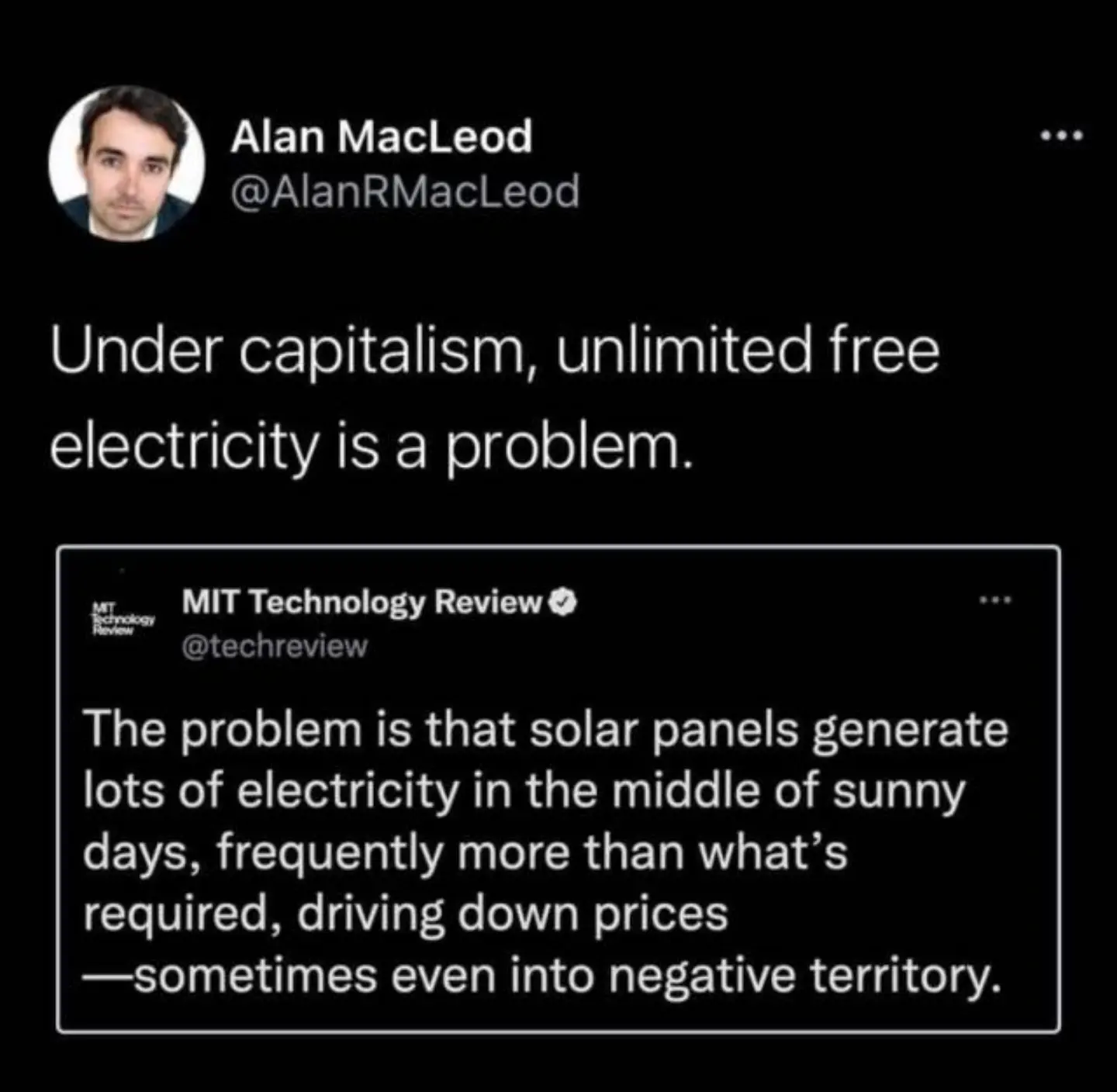this post was submitted on 09 Apr 2024
1629 points (95.9% liked)
Solarpunk
5885 readers
57 users here now
The space to discuss Solarpunk itself and Solarpunk related stuff that doesn't fit elsewhere.
Join our chat: Movim or XMPP client.
founded 2 years ago
MODERATORS
you are viewing a single comment's thread
view the rest of the comments
view the rest of the comments

You gotta recharge your phone battery sometime though - and if electricity had a different cost for nighttime vs. daytime, you can bet that people would choose the day option whenever possible.
(I chose a mobile device here bc it doesn't need any "extra" battery or technology beyond what would already normally be at hand.)
Thats basically how its done in most of Europe. Price changes every 15 minutes and some smart system starting washing machines etc if a certain threshhold is reached.
Of course you can also get a hedged contract where you pay a fixed price and don't need to care about it, but you have the choice.
Uh, in my part of Europe we don't have 15-minute changes, that would be a nightmare.
You can have a contract where the day is split in 3 or 4 different rates, so that it's cheaper to run your washing machine at night for instance.
I don’t get why that would be a nightmare. In my country the electricity prices change per hour for dynamic contracts (they just follow the energy market) and with normal usage it’s cheaper on average than fixed contracts, including those with peak and off-peak rates. For gas it’s a day price, again same as the energy market. For both electricity and gas the prices for the next calendar day are published in the afternoon (that’s how the energy market works). The companies charge a little extra per unit and a small fixed fee per month.
Contracts with fixed rates (including nighttime and daytime rates) have to buy in advance, which means that unforeseen circumstances are included in the price and they also have to account for the fact that they might need to buy extra or sell off their excess based an actual usage.
It's priced per hour, and fairly low slopes, I think. Haven't looked at actual smart grids, though. Basically you'll know that electricity will be cheap (or even negative net) the following night or day or that there will be certain very expensive peak times from 8-10 and 15-17 or so.
In places like Spain, there are different energy plans and some do include "Peak" and "Valley" price variances. Peaks are high demand, like when cooking dinner, "Valley" are the opposite.
Most places in the US have peak and off peak hours with different pricing already. Certain smart thermostats can take advantage of this for running your AC and such.
You can adapt to these inefficies, sure, but doing so still takes more planning and effort (in this case in carefully timing one's phone charging, and in avoiding power using activities like that during non ideal times) than if there was no mismatch of availability and demand. It lessens the impact of the problem, but does not entirely remove it.
In the OP the use of the word "problem" rather than something like "challenge", and referring to the problem being the pricing structure (negative) makes it seem like we've switched topics slightly, but if you are just referring to the foundational inefficiency of energy distribution then yeah I agree it is definitely a challenge. However, that challenge need not be so overwhelming (even perhaps solely wrt pricing) that it negates the benefits of having that form of technology available altogether. e.g. if the power company itself, or each recipient building individually, had its own battery (if let's say those were cheap & sustainable) then that could work, without the users needing to care much. I forget which city but one example in Germany iirc pumps water up a mountain during the day, then at night or on a cloudy day that potential energy falling back down generates electricity again. So yes a "challenge" for sure but not necessarily an insurmountable one!:-)
Also, there are "problems"/"challenges" wrt use of fossil fuels as well, which have implications for climate change, and therefore even purely from a profit perspective there's government laws & subsidies and public perception that can affect it, which could push the overall net towards being beneficial to store that energy for later.
The answer to this is local energy storage. It could be at the home level, but doing it by neighborhood/industrial block would be better
Then, you lessen the strain on the grid at large, and you also capitalize on the periods of low demand. This means less spot energy production and built in storage, making it easier to make the most of renewables while minimizing the need to fire up a natural gas plant to make up the difference